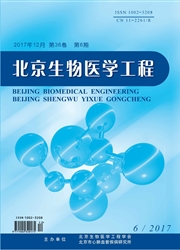

 中文摘要:
中文摘要:
目的研究手机辐射对脑电信号的影响。方法首先通过调查问卷调查在校大学生手机使用状况及使用感受。根据调查问卷选取使用量较多的3款手机Nokia6220C、SamsungGT-S3930C和Nokia7610,用NBM-520电磁辐射分析仪测量各手机不同状态下的电磁波强度。在参与调查的人群中选取11名被试参加试验,用NT9200数字脑电仪分别记录被试在手机通话前、手机直接通话30min后、带手机耳机通话30min后的静息脑电信号,对比3种状态下各频段脑电信号的功率谱幅值,采用SPSS18.0软件进行统计分析。结果手机直接通话30min后脑区的d,频段功率谱幅值均大于手机通话前与带耳机通话状态下的幅值。手机通话前各脑区的β2频段幅值均大于手机通话后与带耳机通话状态下的波幅。手机通话前、手机直接通话后与带耳机通话后各状态之间无显著性差异(P〉0.05)。结论短时间的手机辐射对脑电信号影响不显著。
 英文摘要:
英文摘要:
Objective To study the effect of mobile phone radiation on electroencephalograph (EEG). Methods Firstly, questionnaires were distributed to the college students to investigate the mobile phone types and their feelings. Three most frequently used mobile phones Nokia 6220C, Samsung GT-S3930C and Nokia 7610 were selected and their electromagnetic wave intensities were measured with NBM-520 electromagnetic radiation analyzer. Eleven students involved in the investigation were recruited to participate in the experiments. Their rest EEGs before phone ca11,30 mins after phone call with and without using earphone were recorded by NT9200 digital EEG. The EEG power spectrum of different frequency bands in three different states were compared and analyzed by statistical software SPSS18.0. Results Thirty minutes after phone call without earphone,the power spectrum amplitude of ct1 frequency band in all brain areas was greater than the other two states. The power spectrum amplitude of β2 frequency band before a phone call was greater than the other two states. However, statistical analyses showed that there was no significant difference in the three different states ( P 〉 0.05 ). Conclusions The effect of mobile phone radiation in short time on eleetroencephalographic signals is not significant.
 同期刊论文项目
同期刊论文项目
 同项目期刊论文
同项目期刊论文
 期刊信息
期刊信息
